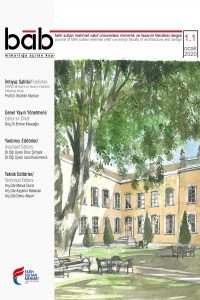
bab Journal of FSMVU Faculty of Architecture and Design
Yazarlar: Cemil EKBER
Konular:Mimarlık
Anahtar Kelimeler:Intervention,Territory,Convention,Rights,Sustainability
Özet: This paper argues that higher quality built environments can never be commodified, but rather should evolve from its inhabitants. Nowadays, users can choose from what is already produced by profit seeking industries, yet they cannot decide their manufacturing specifications. Environmental elements or configurations are no exception. Capitalism with its Western mode of production resulted in shaping built environments all over, including Muslim Middle Eastern settlements. Hence, components of the built environments such as houses and schools became commodities thus eliminating users’ participation except on the selection level from an already finished products. This process is quite different than traditional ones in the Muslim built environment in which production is based on users’ control. I.e., production is not based on participation as one might think, but rather on the power of controlling all environmental configuration by residents at all levels. This process, as the paper argues, will have massive positive impacts such as sustainability. The paper depicts three major mechanisms to delineate the process of creating built environments with the least possible cost yet leading to much higher qualities than those created by capitalism. The three mechanism are: 1) reducing land value as much as possible to an affordable level for the masses; 2) environmental decisions are based on the principle of damage leading to “accretions of decisions” with no external interventions; 3) deep territorial structure to further concentrate responsibilities in the hands of local inhabitants. Thus all three leading to environmental knowledge based on local control and thus responding to local needs, ambiance and materials resulting in sustainable environments. In summary, environmentally, commodification of capitalism is the archenemy of sustainability.